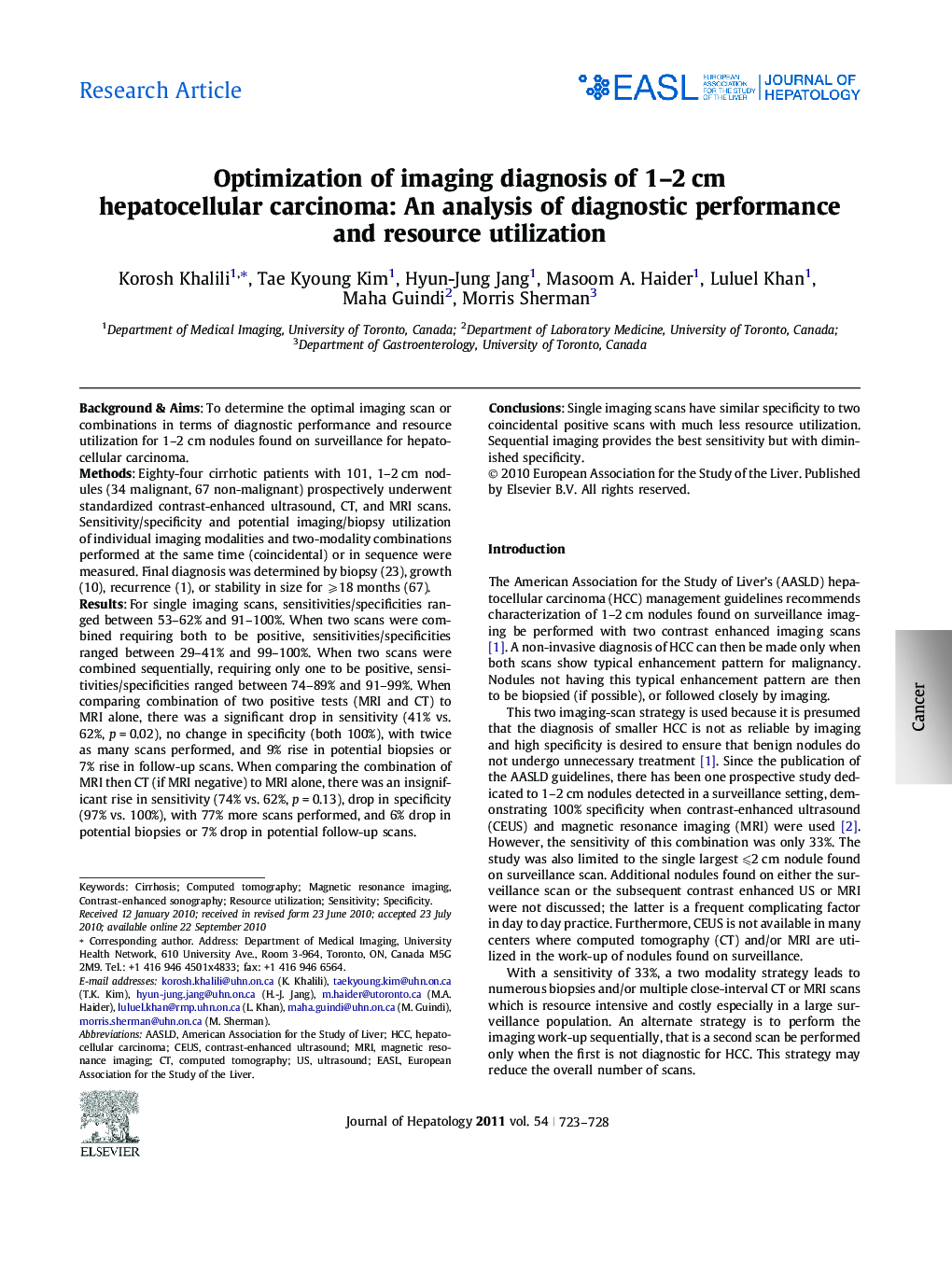| Article ID | Journal | Published Year | Pages | File Type |
|---|---|---|---|---|
| 6108565 | Journal of Hepatology | 2011 | 6 Pages |
Background & AimsTo determine the optimal imaging scan or combinations in terms of diagnostic performance and resource utilization for 1-2 cm nodules found on surveillance for hepatocellular carcinoma.MethodsEighty-four cirrhotic patients with 101, 1-2 cm nodules (34 malignant, 67 non-malignant) prospectively underwent standardized contrast-enhanced ultrasound, CT, and MRI scans. Sensitivity/specificity and potential imaging/biopsy utilization of individual imaging modalities and two-modality combinations performed at the same time (coincidental) or in sequence were measured. Final diagnosis was determined by biopsy (23), growth (10), recurrence (1), or stability in size for ⩾18 months (67).ResultsFor single imaging scans, sensitivities/specificities ranged between 53-62% and 91-100%. When two scans were combined requiring both to be positive, sensitivities/specificities ranged between 29-41% and 99-100%. When two scans were combined sequentially, requiring only one to be positive, sensitivities/specificities ranged between 74-89% and 91-99%. When comparing combination of two positive tests (MRI and CT) to MRI alone, there was a significant drop in sensitivity (41% vs. 62%, p = 0.02), no change in specificity (both 100%), with twice as many scans performed, and 9% rise in potential biopsies or 7% rise in follow-up scans. When comparing the combination of MRI then CT (if MRI negative) to MRI alone, there was an insignificant rise in sensitivity (74% vs. 62%, p = 0.13), drop in specificity (97% vs. 100%), with 77% more scans performed, and 6% drop in potential biopsies or 7% drop in potential follow-up scans.ConclusionsSingle imaging scans have similar specificity to two coincidental positive scans with much less resource utilization. Sequential imaging provides the best sensitivity but with diminished specificity.
